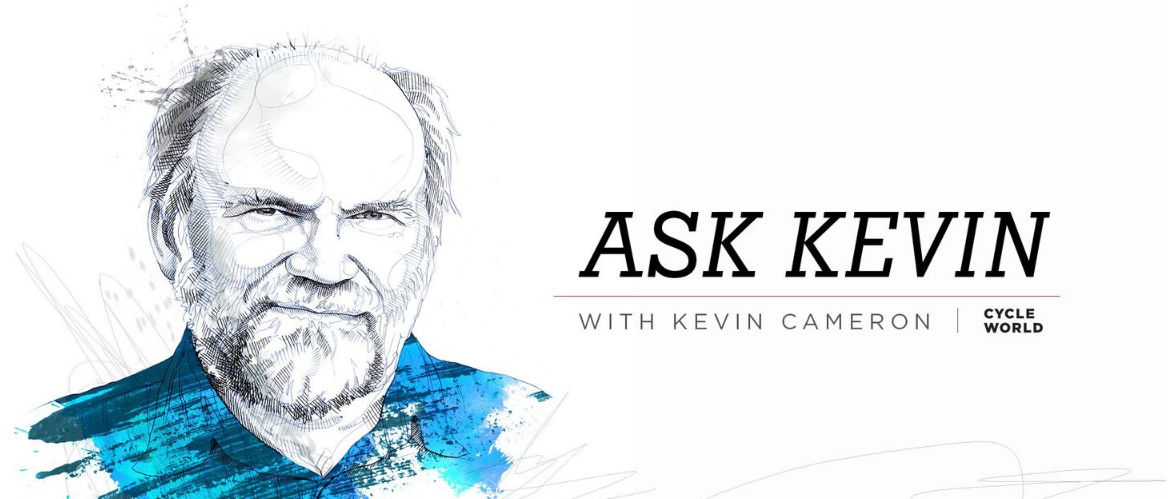Keeping Con-Rod Big Ends Properly Lubricated

In the early days of the motorcycle, railroads were the dominant transportation technology, and consequently many an early motorcycle builder had spent time in railroad shops. Accordingly, slow-turning early internal combustion (IC) engines looked a lot like steam engines. They used heavy iron castings, and their shafts turned on bronze bushings lubricated by screw-down grease cups or drip oilers.
As design experience caused engines to turn faster and become smaller and lighter per horsepower produced, bearing loads and temperatures increased, making bronze bushings iffy. Pour half a cup of oil into the crankcase and hope crank rotation splashes it to where it’s needed. Attach a dipper to the con-rod’s big end and hope it splashes enough into that most critical of all engine bearings. (You can still see such “dippers” in some lawnmower engines today.) Cast little gutters into the inner walls of the crankcase, right above each of the two main bearings, and hope to catch oil trickling down the surface with a drilling leading to the bearing.
Enter the Roller Bearing
The safety bicycle was an emerging technology in 1895 (chain drive, both wheels of the same size), made possible by mass-produced rolling bearings. Friedrich Fischer’s new factory in Schweinfurt, Germany, (completed 1896) could make five million balls a week.
Word got around quickly: Rolling bearings can survive on a lot less oil than can bronze bushings. The faster a shaft turns in a bushing, the hotter the oil in that bushing becomes, and the more it “turns to water” (loses viscosity with rising temperature). It may survive if that hot oil is constantly replaced with cool, but if not, it may seize.
Bike engines lagged behind auto-engine development because the auto buyer of 1905 was a wealthy person, while someone on a bike was trying out the new IC prime mover in its cheapest, most accessible form. (When cars were selling for 2,500 British pounds, you could have a motorbike for 50.) That tended to keep motorcycle engines simple, and pumped, recirculating oil systems remained rare until the later 1920s.
The built-up crankshafts of the rolling-bearing era were beautiful to behold.
In the meantime, all kinds of half-measures prevailed. Racing cars carried a mechanicien whose constant duty was supervising drip oilers serving the various parts of the engine. Auto and racing pioneer Ettore Bugatti liked to place a collector ring at one end of each crankpin, so that some oil supplied to the adjacent main bearing would be flung into these collector rings and then reach the con-rod big-end bearings.
A result of the half-measures was frank distrust of plain bearings, whose imperfect function placed rpm limits on most engines. World War I aircraft engines typically tuned 1,200 rpm, and racing car engines of 1913 about 2,000.
All this is hard to imagine in 2022, when plain bearings have nearly completely displaced rolling bearings in crankshaft applications. But 100 years ago, a plain bearing’s soft “white metal” was still being applied in layers so thick they failed from outright fatigue, and the need for continuous filtered-and-cooled oil feed was not yet understood. In modern plain bearings the bearing material is very thin, and oiling systems have achieved high reliability.
In the interwar period, therefore, racing-engines designers turned to rolling bearings—even adopting expensive multipiece crankshafts, machined to the most exacting standards, to make this possible.
1.The news above mentioned with detailed source are from internet.We are trying our best to assure they are accurate ,timely and safe so as to let bearing users and sellers read more related info.However, it doesn't mean we agree with any point of view referred in above contents and we are not responsible for the authenticity. If you want to publish the news,please note the source and you will be legally responsible for the news published.
2.All news edited and translated by us are specially noted the source"CBCC".
3.For investors,please be cautious for all news.We don't bear any damage brought by late and inaccurate news.
4.If the news we published involves copyright of yours,just let us know.
Next Tearlach Acquires Pegmatite Bearing Lithium Projects Along ‘Electric Avenue,’ Adjacent to Frontier Lithiums Flagship Deposits
BRIEF INTRODUCTION
Cnbearing is the No.1 bearing inquiry system and information service in China, dedicated to helping all bearing users and sellers throughout the world.
Cnbearing is supported by China National Bearing Industry Association, whose operation online is charged by China Bearing Unisun Tech. Co., Ltd.
China Bearing Unisun Tech. Co., Ltd owns all the rights. Since 2000, over 3,000 companies have been registered and enjoyed the company' s complete skillful service, which ranking many aspects in bearing industry at home and abroad with the most authority practical devices in China.

